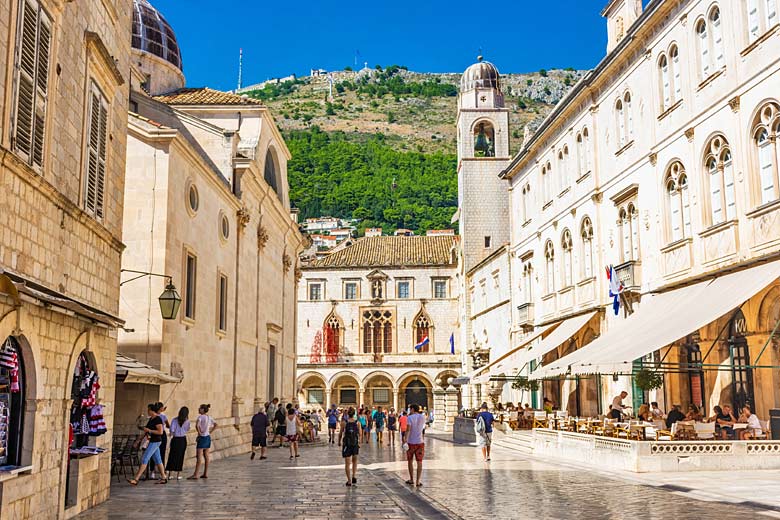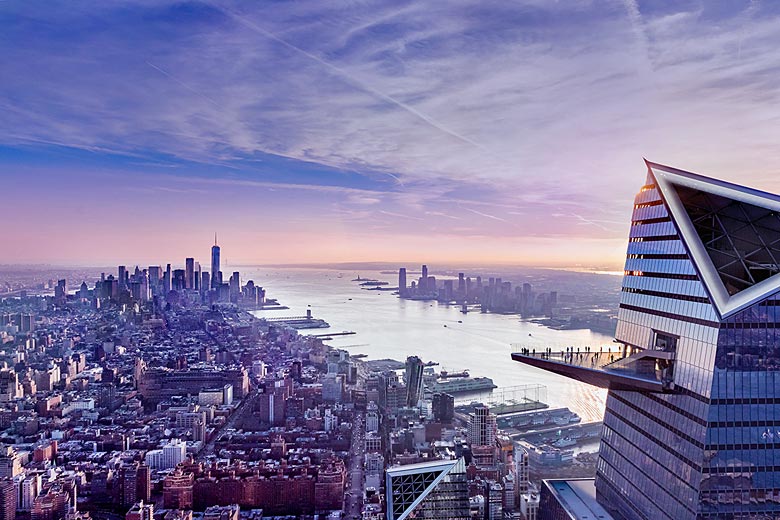UV index forecast levels
The UV forecast shows maximum UV levels for midday when the skies are clear.
This is your guide to the UV index with a detailed breakdown of the main differences between UVA and UVB, as well as top tips for staying safe in the sun.
We all know that we should cover ourselves in sunscreen, avoid the midday sun, and wear a hat - but do you know why? Find out much more about looking after your skin, and how not to let sunburn ruin your next holiday.
- UV forecast for holiday destinations
- UV index: about UV rays
- Difference between UVA & UVB
- UV protection: the danger of UV rays
- UV index: where levels are highest
- UV index by month

UV index: about UV rays
The UV index is an internationally agreed measurement of the ground level strength of ultraviolet radiation produced by the sun.
It was adopted by World Health Organization (WHO) in 1994 as a way of warning people who are out in the sun of the need to protect themselves from sunburn, which can lead to skin cancer, cataracts and other lasting skin damage, including premature ageing.
Index values range from 1 to 10 with extreme levels expressed as 11+. The values published always show UV intensity at its maximum level for the day, which normally coincides with the time that the sun is at its highest in the sky:
| UV index levels | |
|---|---|
| 0 to 2 | low |
| 3 to 5 | moderate |
| 6 to 7 | high |
| 8 to 10 | very high |
| 11+ | extreme |
Where you go on holiday or are planning to travel will determine how severe the UV threat is (you can find out more about annual UV averages for destinations worldwide in our climate guides).
Once you know the UV index of your destination, you can follow the WHO's advice on staying safe in the sun:
| UV protection guidelines | |
|---|---|
| 0 to 2 | you can safely enjoy being outside unless you have particularly fair skin |
| 3 to 5 | take precautions such as covering up; seek shade near midday when the sun is strongest |
| 6 to 7 | cover up, use a high SPF sunscreen, wear a hat and reduce time in the sun at midday |
| 8 to 10 | don't stay out in the sun for too long |
| 11+ | take all precautions; avoid being in the sun within three hours of solar noon (12pm) |
UV rays: the difference between UVA & UVB
There are two main types of UV that pose a threat to our skin, health, and wellbeing: UVA and UVB. While moderate exposure to these UV rays, when using adequate protection, can lead to lovely tan, you can easily burn if you don't play safe in the sun.
Luckily there is a certain amount of natural protection from the damage these rays can cause. Nearly 80% of the UV radiation from the sun is absorbed in the atmosphere, mainly by ozone gases, before it even reaches the earth's surface.
Of what does get through, only about 5% consists of the more harmful UVB radiation - the one that causes sunburn - the other 95% being UVA.

Evolution has also provided us with a natural way to protect ourselves - it's called a suntan! Our skin produces a darker coloured pigment called melanin which is actually a very effective sunscreen.
However, it only offers limited protection and does not stop skin damage altogether. People with naturally darker skins are more resistant to the damage that UV radiation can cause
About UVA rays
While a lovely sun kissed glow can make you feel nice and healthy, the reality is that the UVA rays involved in giving you that tan actually age your skin, and can cause irreversible damage.
UVA is a longer wavelength radiation that penetrates clouds, certain glass windows, and even deep into your skin causing it to lose its elasticity and eventually wrinkle.
A truly revealing experience is to go for a UV facial scan (various spas and health clinics offer this). Simply place your face into a specially designed scanner that captures any damage to your skin beneath the surface - you are likely to be surprised/horrified at what you find.
As well as giving you a very visual impression of any damage, the specialist will be able to advise you on the best course of action from simple hydration to dedicated moisturisers, and treatments.
About UVB rays
UVB is the nasty one - the dangerous rays that you need that super SPF for. Radiation from UVB rays attacks your skin cells, which increases your chance of contracting skin cancer.
While low SPF sunscreens are available, to give yourself the best possible protection from UVB rays, try to aim for SPF15 or higher, especially if you're in a region with very high or extreme UV exposure. Unlike UVA however, UVB doesn't penetrate glass.

On a completely overcast day - one where there are no shadows produced by the sun - UVB cannot penetrate the cloud.
However, people should be wary when there are some clouds in the sky because UVB can penetrate thin cloud, and even reach higher levels than in the absence of clouds by reflecting off the sides of clouds.
UVB rays can also reflect off the sea and sand, so even if you are under an umbrella on the beach you are still being bombarded by reflected radiation.
Snow is another great reflector of UV radiation, often producing extreme levels of UV. Most people are adequately covered up when skiing but the face and eyes are especially vulnerable.
High SPF and sunglasses are essential because snow blindness, inflammation of the cornea in the eye, is a particularly painful form of injury caused by high levels of UVB radiation.
UV protection: tips for staying safe in the sun
In theory, it's simple: stay protected from the sun's UV rays by staying in the shade, especially during the midday sun (typically from 10am to 2pm).
However, when we go on holiday, it's generally because we want to be in in the sun, whether it's lying on a lounger, out and about swimming, hiking, canoeing, or exploring new towns and cities at a leisurely pace.
If you are in the sun, it's vital that you wear appropriately strong sunscreen (SPF), don a good pair of sunglasses and a hat, and wear longer, loose fitting clothes if possible, particularly if you're travelling in the tropics and other regions where UV is at its most ferocious.

If you're going to sit in the sun you need to drink a lot of liquid - sadly, pints and cocktails don't count as alcohol is a diuretic, which makes you lose liquid that your body needs, and can cause dehydration.
Getting sunscreen right
Unfortunately, slapping on SPF as you step outside is too little, too late. Sunscreen needs at least 20 minutes to properly absorb into the skin and offer maximum protection.
Once again, where you are will depend on the level of UV protection required - for example, UV is stronger in Brazil than in Spain.
Make sure you buy sunscreen that protects against both UVA and UVB rays: opt for a minimum four star rating for UVA and SPF15 against UVB. Other things to remember:
- buy new SPF every six months: remember that sunscreen does go off - check the sell by date
- reapply sunscreen every few hours during the day it is easily washed off by sweating and swimming
Protecting children in the sun
Unsurprisingly, children have much more sensitive skin than adults, making them even more susceptible to sunburn and severe skin damage.
While keeping young children in the shade is preferred, it's not necessarily ideal, so a very high factor sunscreen is essential for children playing the sun, at least SPF50, while a sunhat, glasses and suitable clothing are also recommended.
Swimming tops which cover the upper body provide valuable extra protection.
Coping with sunburn
Sunburn: a painful reality that almost everyone has endured at least once in their life. However you managed it - be it an attempt to tan (we've all been there) or just forgetting to reapply the SPF - if you act fast you can minimise the damage.
Although it takes eight to 12 hours after exposure for sunburn to take effect, you often know when you've had a little too much as your skin can feel prickly or, in extreme cases, you may even feel unwell.

Top tip: if you think you've overdone it, take an anti-inflammatory, such as ibuprofen, before redness (which is an inflammation of the skin) sets in.
It's vital that you act fast, as anti-inflammatories can only help before your skin turns red, not after your skin cells have been damaged.
- for a mild but uncomfortable sunburn, try a cool bath as it helps to dilate the blood vessels
- moisturise burnt skin with aloe vera or a specialist after sun lotion to avoid peeling and your skin from drying out
- if you are badly burnt and your skin is blistering, seek medical advice ASAP
If you have any concerns over damage from UV rays or sunburn, check out the advice from the NHS, and consider consulting your doctor.
If you don't use a high SPF, you increase your chances of skin cell damage and of getting skin cancer
UV index: where levels are highest
When it comes to defining destinations liable to extreme levels of UV, there are two distinct factors to consider. Firstly, equatorial regions generally have the highest UV levels going.
This is simply due to the fact that when the sun is directly overhead, UV rays have a shorter distance to travel to the ground. Even at sea level, there is an increased risk, especially during the midday sun.

Secondly, there are those destinations at high altitudes, which also endure extreme levels of UV. The thinner atmosphere provides less protection, and the UV increases by around 10% for every 1,000m increase in elevation.
Some destinations with the most severe UV rays, which consistently surpass 12 on the UV index, include:
| Destinations with highest UV levels | |
|---|---|
| South America | Quito (Ecuador), Bogota (Colombia), Cuzco, Machu Picchu (Peru) & La Paz (Bolivia) |
| Africa | Addis Ababa (Ethiopia), Masai Mara highlands (Kenya), Serengeti (Tanzania) & Uganda |
| Southeast Asia | Indonesia, Malaysia & Singapore |
| Indian Ocean | Sri Lanka & Maldives |
| Asia | India, Thailand & Vietnam |
This is not an exhaustive list of regions where UV is severe but it gives you the idea of the types of destinations where you need to take extra care in the sun. You can check the monthly UV index averages for any and all destinations in our climate guide section.
More holiday weather parameters:
- Daylight hours
- Days with some rainfall
- Heat and humidity levels
- Maximum daytime temperature
- Minimum night-time temperature
- Monthly rainfall
- Sea temperature
- Sunshine hours
UV Index (Maximum) by month
Below is the uv index (maximum) levels for popular holiday destinations around the world by month. Select a month to see top destinations or search by name to see all months.
UV Index (Maximum) in January
- Bali
- Cape Town
- Kenyan Coast
- Kerala
- Maldives
- Phuket, Thailand
- Barbados
- Chiang Mai, Thailand
- Goa
- Dominican Republic
- Jamaica
- Dubai
- Sharm el Sheikh
- Fuerteventura
- Gran Canaria
- Lanzarote
- Tenerife
- Cyprus
- Benidorm
- Costa del Sol
- Ibiza
- Majorca
- Malta
UV Index (Maximum) in February
- Bali
- Barbados
- Cape Town
- Chiang Mai, Thailand
- Goa
- Kenyan Coast
- Kerala
- Maldives
- Phuket, Thailand
- Sri Lanka
- Dominican Republic
- Jamaica
- Dubai
- Luxor, Egypt
- Fuerteventura
- Gran Canaria
- Lanzarote
- Sharm el Sheikh
- Tenerife
- Costa del Sol
- Cyprus
- Malta
- Benidorm
- Ibiza
- Majorca
UV Index (Maximum) in March
- Bali
- Barbados
- Cancun
- Dominican Republic
- Jamaica
- Kenyan Coast
- Maldives
- Sri Lanka
- Dubai
- Miami
- Luxor, Egypt
- Orlando
- Fuerteventura
- Gran Canaria
- Lanzarote
- Sharm el Sheikh
- Tenerife
- Morocco
- Algarve
- Benidorm
- Costa del Sol
- Cyprus
- Ibiza
- Majorca
- Malta
UV Index (Maximum) in April
- Bali
- Barbados
- Cancun
- Dominican Republic
- Dubai
- Jamaica
- Miami
- Seychelles
- Sharm el Sheikh
- Mauritius
- Orlando
- Gran Canaria
- Lanzarote
- Tenerife
- California
- Morocco
- Algarve
- Costa del Sol
- Cyprus
- Malta
- Benidorm
- Ibiza
- Majorca
UV Index (Maximum) in May
- Cancun
- Dubai
- Miami
- Sharm el Sheikh
- Bali
- Lanzarote
- Morocco
- Orlando
- Tenerife
- Crete
- Cyprus
- Malta
- Tunisia
- Algarve
- Antalya
- Benidorm
- Bodrum
- Costa del Sol
- Ibiza
- Majorca
- Marmaris
- Rhodes
- Santorini
- Mauritius
- Rome
UV Index (Maximum) in June
- Dubai
- Fuerteventura
- Gran Canaria
- Lanzarote
- Orlando
- Sharm el Sheikh
- Tenerife
- Antalya
- Bodrum
- Costa del Sol
- Crete
- Cyprus
- Malta
- Marmaris
- Rhodes
- Santorini
- Tunisia
- Algarve
- Bali
- Barcelona
- Benidorm
- Corfu
- Ibiza
- Majorca
- Naples
- Nice
- Rome
UV Index (Maximum) in July
- California
- Crete
- Cyprus
- Dubai
- Gran Canaria
- Lanzarote
- Orlando
- Tenerife
- Bali
- Costa Almeria
- Costa del Sol
- Malta
- Rhodes
- Santorini
- Tunisia
- Zanzibar
- Algarve
- Benidorm
- Bulgaria
- Corfu
- Corsica
- Costa Brava
- Costa Dorada
- Ibiza
- Majorca
- Menorca
- Naples
- Sardinia
- Croatia
- Tuscany
UV Index (Maximum) in August
- Bali
- Dubai
- Gran Canaria
- Lanzarote
- Tenerife
- Zanzibar
- California
- Crete
- Cyprus
- Orlando
- Algarve
- Benidorm
- Costa Almeria
- Costa de la Luz
- Costa del Sol
- Malta
- Rhodes
- Santorini
- Tunisia
- Bulgaria
- Corfu
- Corsica
- Costa Dorada
- Ibiza
- Majorca
- Menorca
- Naples
- Sardinia
- Croatia
- Nice
- Tuscany
UV Index (Maximum) in September
- Bali
- Dubai
- Gran Canaria
- Lanzarote
- Morocco
- Orlando
- Tenerife
- Crete
- Cyprus
- Algarve
- Antalya
- Benidorm
- Bodrum
- Costa del Sol
- Malta
- Marmaris
- Rhodes
- San Francisco
- Tunisia
- Corfu
- Ibiza
- Majorca
- Naples
- Tuscany
UV Index (Maximum) in October
- Bali
- Mauritius
- Seychelles
- Cape Verde
- Dubai
- Florida
- Sharm el Sheikh
- Gran Canaria
- Lanzarote
- Tenerife
- Morocco
- Antalya
- Bodrum
- Costa del Sol
- Crete
- Cyprus
- Malta
- Marmaris
- Rhodes
- Tunisia
- Benidorm
- Ibiza
- Majorca
UV Index (Maximum) in November
- Bali
- Mauritius
- Gambia
- Cape Verde
- Goa
- Cuba
- Dubai
- Florida
- Luxor, Egypt
- Marsa Alam
- Miami
- Fuerteventura
- Gran Canaria
- Lanzarote
- Sharm el Sheikh
- Tenerife
- Morocco
- Benidorm
- Costa del Sol
- Cyprus
- Ibiza
- Malta
- Tunisia
- Majorca
UV Index (Maximum) in December
- Bali
- Cape Town
- Kenyan Coast
- Phuket, Thailand
- Barbados
- Gambia
- Jamaica
- Dominican Republic
- Dubai
- Florida
- Fuerteventura
- Gran Canaria
- Lanzarote
- Sharm el Sheikh
- Tenerife
- Benidorm
- Costa del Sol
- Cyprus
- Ibiza
- Majorca
- Malta
- Tunisia
Be inspired
Get your weekly fix of holiday inspiration from some of the world's best travel writers plus save on your next trip with the latest exclusive offers
We promise not to share your details
Related posts
Popular travel offers
Explore holidays in the sun for less
- Beach holidays
- Family holidays
- City breaks
- Summer holidays
- Winter sun holidays
- Holiday offers
- Top travel brands
- Airlines & flights
- Discount hotels
- Airport parking deals
- TUI
- Jet2holidays
- easyJet holidays
- Love Holidays
- British Airways
Airport parking
- Manchester Airport
- Stansted Airport
- Bristol Airport
- Luton Airport
- Birmingham Airport
- Edinburgh Airport
- Gatwick Airport
- Glasgow Airport
- Newcastle Airport
Airport lounges
- Manchester Airport
- Birmingham Airport
- Bristol Airport
- Edinburgh Airport
- Glasgow Airport
- Heathrow Airport
- Newcastle Airport
- Stansted Airport
- Gatwick Airport












